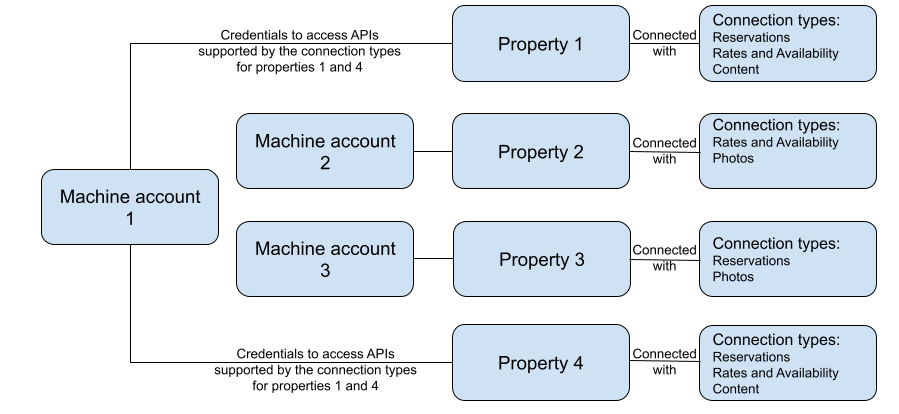Authentication
This topic explains how to authenticate your identity while calling the Booking.com Connectivity APIs.
Booking.com currently supports two methods to authenticate and authorize API requests:
- Token-based authentication scheme
- Credential-based authentication scheme (To sunset on 31 Dec, 2025. See the deprecation timeline)
Advantages of using the token-based authentication scheme
This section lists the advantages of using the token-based authentication scheme over the credential-based authentication scheme.
| Functionality | credential-based authentication scheme | token-based authentication scheme |
|---|---|---|
| Using machine account credentials | With every API request | Once every hour to generate a new short-lived token. |
| Short lived tokens | No | Yes. Every one hour. |
| Token revocation after expiry | No expiry | Yes |
| Supports Json Web Tokens | No | Yes |
| Machine account details shared only once at the time of creation | Yes | Yes |
| Verify token authenticity | No | Yes |
To retrieve latest messages using the /messages/latest endpoint, you must enable access to the endpoint after creating or migrating your machine account to the token-based authentication method.
For more information on how to enable this setting in the Provider portal, see Enable or reset messaging queue.
Introducing machine accounts
Machine accounts provide access credentials to either generate an API token (using the token-based authentication scheme) and then call the APIs or to call the Booking.com Connectivity APIs directly using the credential-based authentication scheme. Support for the latter has a planned sunset date on 31 December, 2025. For more information, see the deprecation timeline.
You can create machine accounts using the Connectivity Portal.
If you don't have access to the Connectivity Portal, your colleague with an existing account can create an account for you. Booking.com typically shares access to the Connectivity Portal during the onboarding process.
Understanding the access scope using machine accounts
The following diagram illustrates the access scope for the Booking.com Connectivity APIs.
- Machine accounts are created at the property-level.
- You can add more than one property to a machine account.
- API access to individual property resources are restricted based on the connection type with the property.
- Each connection type grants access to a specific set of APIs and their corresponding endpoints.

Guidelines around machine account usage
When working with machine accounts, follow the guidelines below:
- Enforce separation of concerns by creating dedicated machine accounts for testing purposes and to use in production.
- Configure test machine accounts with test properties and production machine accounts with production properties.
- Some APIs like Reservations API can produce and return large response payloads. Configuring fewer properties per machine account helps generate manageable response payload size. This is especially beneficial when retrieving pending reservations immediately after an outage. With multiple accounts, you can sync missed reservations faster.